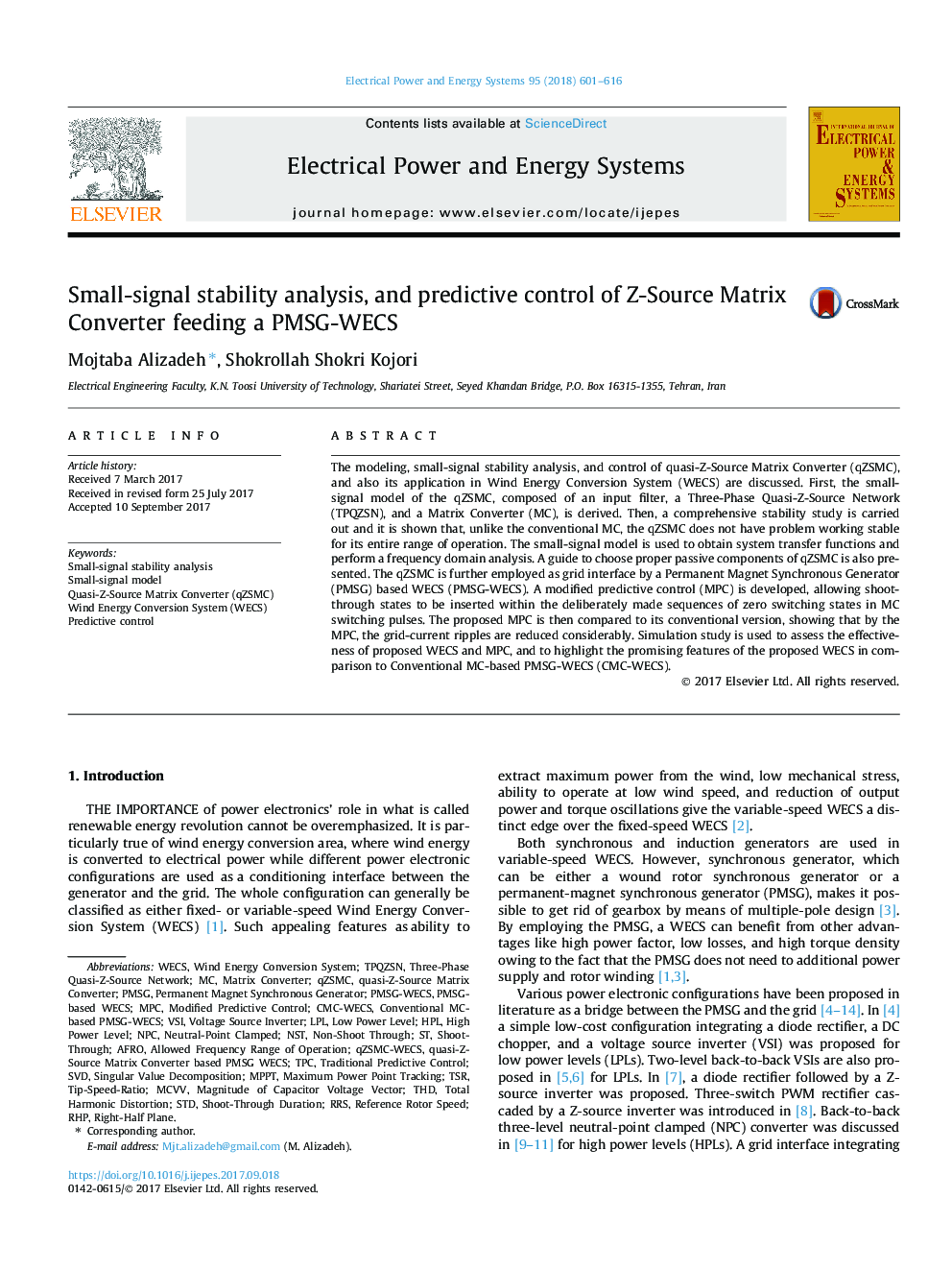| Article ID | Journal | Published Year | Pages | File Type |
|---|---|---|---|---|
| 4945461 | International Journal of Electrical Power & Energy Systems | 2018 | 16 Pages |
Abstract
The modeling, small-signal stability analysis, and control of quasi-Z-Source Matrix Converter (qZSMC), and also its application in Wind Energy Conversion System (WECS) are discussed. First, the small-signal model of the qZSMC, composed of an input filter, a Three-Phase Quasi-Z-Source Network (TPQZSN), and a Matrix Converter (MC), is derived. Then, a comprehensive stability study is carried out and it is shown that, unlike the conventional MC, the qZSMC does not have problem working stable for its entire range of operation. The small-signal model is used to obtain system transfer functions and perform a frequency domain analysis. A guide to choose proper passive components of qZSMC is also presented. The qZSMC is further employed as grid interface by a Permanent Magnet Synchronous Generator (PMSG) based WECS (PMSG-WECS). A modified predictive control (MPC) is developed, allowing shoot-through states to be inserted within the deliberately made sequences of zero switching states in MC switching pulses. The proposed MPC is then compared to its conventional version, showing that by the MPC, the grid-current ripples are reduced considerably. Simulation study is used to assess the effectiveness of proposed WECS and MPC, and to highlight the promising features of the proposed WECS in comparison to Conventional MC-based PMSG-WECS (CMC-WECS).
Keywords
MPPTSmall-signal stability analysisWECSTHDPMSGVSIRHPLPLRRSSTDSVDTSRHPLTPCNSTNPCMPCTotal harmonic distortionVoltage source invertersingular value decompositionMaximum power point trackingWind energy conversion systemWind energy conversion system (WECS)Matrix converterSmall-signal modelPermanent magnet synchronous generatorPredictive control
Related Topics
Physical Sciences and Engineering
Computer Science
Artificial Intelligence
Authors
Mojtaba Alizadeh, Shokrollah Shokri Kojori,
